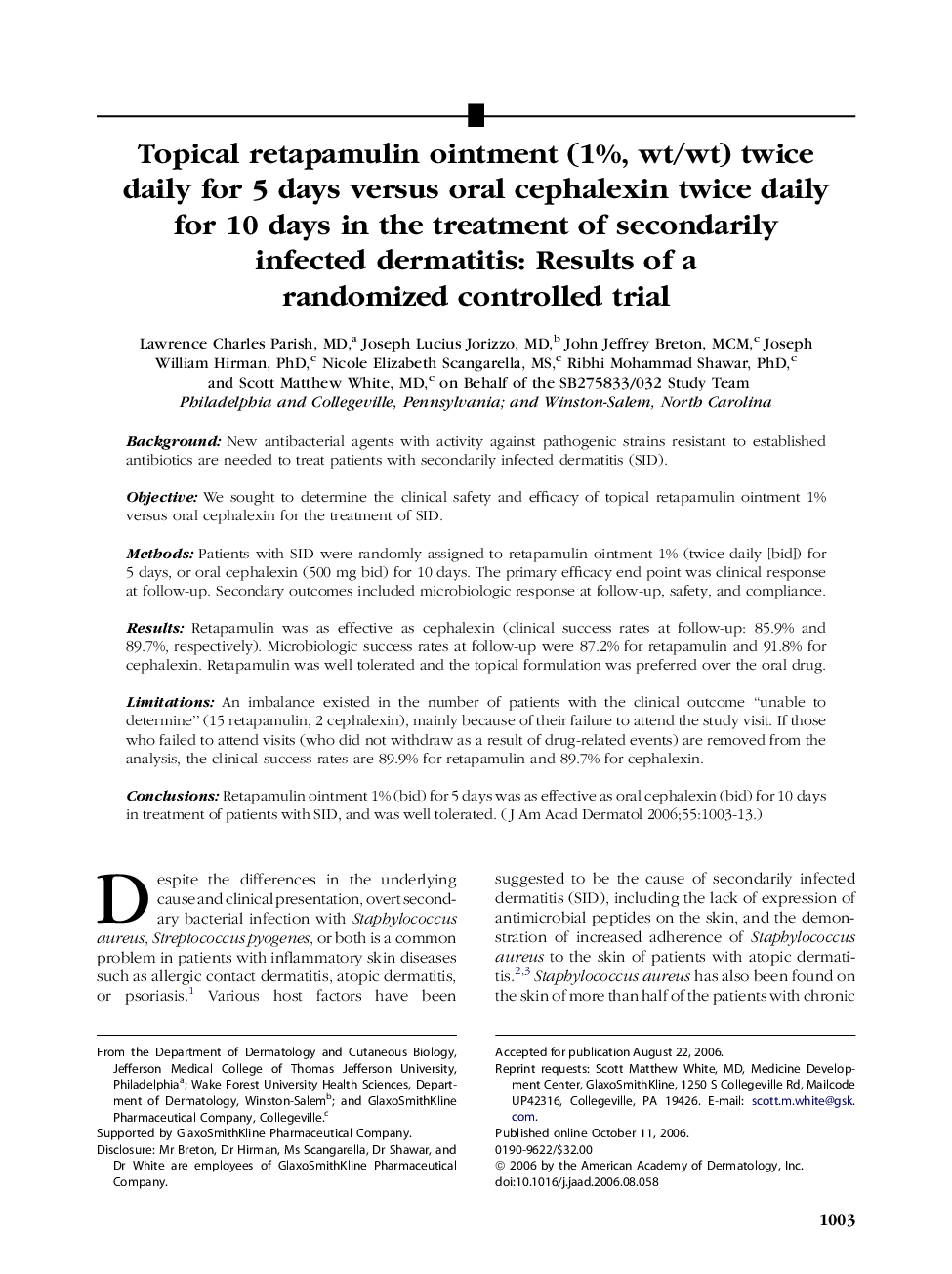| Article ID | Journal | Published Year | Pages | File Type |
|---|---|---|---|---|
| 3210010 | Journal of the American Academy of Dermatology | 2006 | 11 Pages |
BackgroundNew antibacterial agents with activity against pathogenic strains resistant to established antibiotics are needed to treat patients with secondarily infected dermatitis (SID).ObjectiveWe sought to determine the clinical safety and efficacy of topical retapamulin ointment 1% versus oral cephalexin for the treatment of SID.MethodsPatients with SID were randomly assigned to retapamulin ointment 1% (twice daily [bid]) for 5 days, or oral cephalexin (500 mg bid) for 10 days. The primary efficacy end point was clinical response at follow-up. Secondary outcomes included microbiologic response at follow-up, safety, and compliance.ResultsRetapamulin was as effective as cephalexin (clinical success rates at follow-up: 85.9% and 89.7%, respectively). Microbiologic success rates at follow-up were 87.2% for retapamulin and 91.8% for cephalexin. Retapamulin was well tolerated and the topical formulation was preferred over the oral drug.LimitationsAn imbalance existed in the number of patients with the clinical outcome “unable to determine” (15 retapamulin, 2 cephalexin), mainly because of their failure to attend the study visit. If those who failed to attend visits (who did not withdraw as a result of drug-related events) are removed from the analysis, the clinical success rates are 89.9% for retapamulin and 89.7% for cephalexin.ConclusionsRetapamulin ointment 1% (bid) for 5 days was as effective as oral cephalexin (bid) for 10 days in treatment of patients with SID, and was well tolerated.
